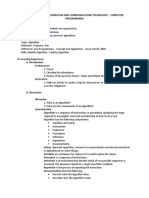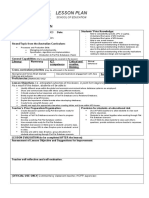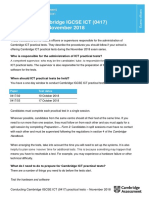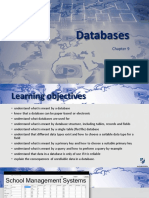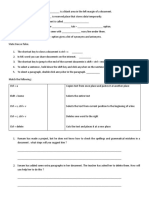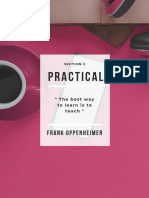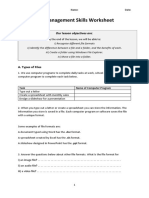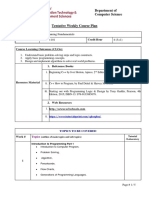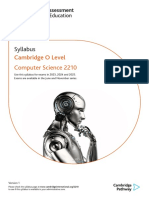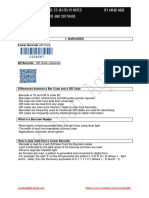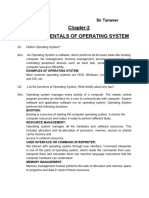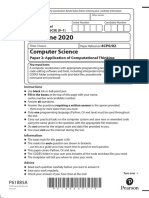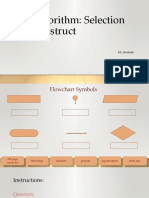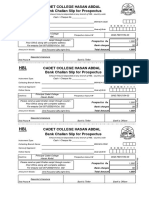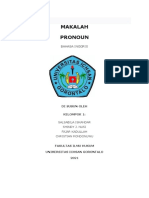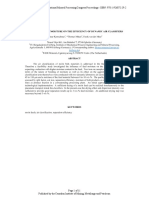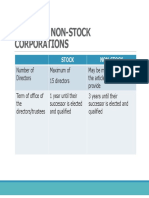INFORMATION TECHNOLOGY
PROBLEM-SOLVING AND PROGRAMMING
Unit Title: Problem-Solving and Program Design
Unit Summary: This unit develops the cognitive skills to solve problems and program design
Curriculum Links: Caribbean Examination Council – Caribbean Secondary Education Certificate
Syllabus – Information Technology. Section 7: Problem Solving and Program
Design.
Module: Section 7 – Problem Solving and Program Design
Year Level: Form 4
Approximate Time Needed Total (10) lessons over (16) periods (6 double, 4 single) (40 minutes per
period)
Standards/ Syllabus On completion of this Unit, students should be able to develop the cognitive
Outcomes skills to solve problems, and competence in applying a structured approach to
solving problems on the computer.
Curriculum-Framing Questions
Essential Question How can knowledge of problem solving be important to 21st century learners?
Unit Question How can knowledge of problem solving equip 21st century learners to function
effectively in a dynamic technological era?
Content Questions 1. What is problem solving?
2. What are constants and variables?
3. What are the significant components of decomposition?
4. What are the concepts of Algorithms?
5. How can algorithms be represented as pseudocode and flowcharts?
6. How to apply conditional branching in algorithms?
Before Unit Work Begins While Students Work on Unit After Unit Work Ends
Oral questioning Individual Work Summative Assessment / test to
Brainstorming Think-pair share/discussions evaluate/demonstrate
K-W-L and group work understanding using student
STAD cooperative learning summative at the end of the unit
strategy (unit post-project).
Formative assessment during SBA problem solving task
implementation of the unit to implementation
provide feedback to students
Teacher’s observation of
students’ tasks
Unit Details Unit Details
1. Lesson 1 Title: Define the concept of problem solving.
Concept Lesson - Steps in problem solving.
Introduction to Problem Basic treatment of the structured approach for solving complex problems.
Solving (2 periods)
2. Lesson 2 Title: Component details: input, process and output
Problem decomposition Defining diagram (IPO chart)
(IPO Chart) (1 period)
1
�3. Lesson 3 Title: Variable and Constants – show the differences and how it can be used.
Constants and Variables Naming conventions for variables
Data types. (Integer, Real, String, Char, Boolean)
(1 period)
4. Lesson 4 Title: Use relational operators <, >, =, <=, >=, <>
Relational and Arithmetic Use arithmetic operators: +, -, *, /, MOD, DIV
operators (1 period)
5. Lesson 5 Title: Use logical operators: AND, OR, NOT
Logical operators Use truth tables.
(1 period)
6. Lesson 6 Title: Define the term algorithms
Concepts of Algorithms Inform students of the three structures in algorithms
Characteristics: finite number of steps, precise, unambiguous, flow of
control from one process to another, terminate.
Flowchart symbols for: input/output, process, directional arrows, start/stop
Pseudocode: read, input, store, write, print, output, display
(2 periods)
7. Lesson 7 Title: Initialise variables
Representing algorithms - Construct pseudocode to represent sequential statements
Sequential Statements Develop flowcharts to represent sequential statements
(2 periods)
8. Lesson 8 Title: Use pseudocode conditional branching: if-then
Representing algorithms Construct pseudocode with conditional branching: if-then
– Conditional Branching Flowchart symbol for: decision
I Develop flowcharts to represent conditional branching: if-then
(2 periods)
9. Lesson 9 Title: Construct pseudocode to represent conditional branching: if-then-else
Representing algorithms Develop flowcharts to represent conditional branching: if-then-else
– Conditional Branching (2 periods)
II
10. Lesson 13 Title: Students work in SBA groups to develop IPO chart, algorithm: pseudocode
Assessment and flowchart for SBA problem solving task.
(2 periods)
Student Prerequisite Skills
Communication skills Computational thinking skills
Collaboration skills
Student Prior Knowledge
Ability to read and understand
Teachers’ Processional Learning
Problem Solving Skills Knowledge of algorithms: pseudocodes and
flowcharts
Teaching and Learning Activities
Strategies:
2
� Oral questioning Observation
Think-pair-share Independent work
Cooperative learning Guided instruction
Brainstorming Modelling teacher demonstration
Accommodations for diverse needs
Students with Special Needs
Maintain an organized classroom and limit distractions
Combine oral and visual aids to written work
Break down instructions into smaller, manageable tasks
Use multi-sensory strategies.
Provide individual help
Peer assisted learning strategy to facilitate more advance learners assisting weaker ones.
Assist outside of classroom
Gifted Students
These students can be challenged with:
Differentiated instruction
Higher order questions on worksheets
Additional tasks while others are catching up
Advanced students will assist other students (Peer Teaching)
Materials and Resources required for unit
Technology- Hardware Computers/ Laptops Speakers
Multimedia Projector Printer
Technology- Software Microsoft PowerPoint Internet access
Microsoft Word
Printed Materials Lesson notes sheets Test sheets
Think-pair-share sheets Rubrics
Activity sheets Checklists
Brainstorming sheets Self and peer evaluation forms
Other Resources Computer lab with stations for White board
students to work independently or Markers
in groups Devices
Unit Author
First and Last Name: Trisha Emamdee
School District: North Eastern Educational District
School Name: Coryal Secondary School
School Address: Cumuto Main Road, Cumuto
